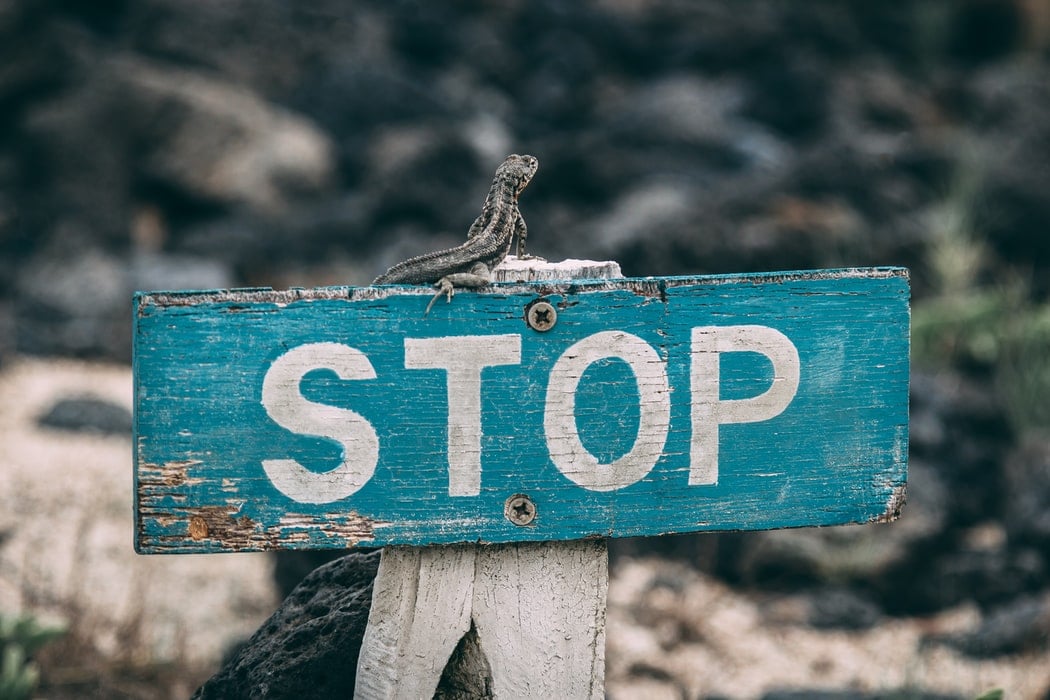Have you ever had someone tell you to just stop overthinking, being anxious or getting stressed? Ha! It’s one of the most frustrating responses ever, but perhaps they’re actually onto something. During my first sessions of CBT for agoraphobia (around 7 years ago now), my therapist taught me the STOPP technique for anxiety. It’s a technique that has stuck with me for all of those years and something I still try to do regularly. So, if you’re ever feeling anxious, overwhelmed, stressed or stuck in your own thoughts, try this mindfulness method.
What is the STOPP Technique or STOP Method?
Many therapists call this method “CBT in a nutshell.” It’s a mindfulness skill that’s quite simple to do, as long as you remember to do it! While it may sound like someone is just telling you to ‘stop’ being anxious or overwhelmed, it’s not quite as simplistic as that. There are four or five steps to it, depending on whether you do STOP or STOPP…
Why use this method for Anxiety and Overwhelm?
Mindfulness techniques are an excellent thing to learn if you find yourself struggling with anxiety, overwhelm, negative thoughts or rumination. They help bring us back to the present moment and truly understand what’s going on in our own minds. The STOPP method can help ground us when we feel as though everything is all a little too much. It’s why they call it “CBT in a nutshell!”
Of course, as with any of these CBT methods and techniques, they won’t work all of the time for everyone. So, if you do feel as though it’s becoming too much, please do seek professional help if you feel able to.

The Four Steps of STOP
Now we know what the STOP Method actually does, let’s go through the four basic steps that I learnt (some therapists have slightly different variations, but the premise is the same):
S – STOP
When you notice negative thoughts or anxiety creeping in, or you find yourself ruminating, stop what you’re doing. Physically stop. Don’t do anything else, don’t move. Just stop wherever you are.
T – TAKE
Now, take a deep breath and (if you can) a physical step back. Try a breathing exercise or simply take deep breaths in through the nose and out through the mouth. I like to take a physical step back here too, just to signify that I’m going through the STOP Method.
O – OBSERVE
Once you have taken some deep breaths to gather yourself, it’s time to observe. There are a few things you’ll want to pay attention to here:
- Your thoughts – What’s going through your mind right now? What are you telling yourself?
- Your feelings – What emotions are you experiencing?
- Your body – What physical sensations are you feeling? Where are these physical sensations?
- Your behaviour – What are you reacting to? Where is your focus of attention? What are you doing right now?
Spend a little bit of time just observing these things. Don’t pass judgement on any of them, just notice that they are there.
P – PROCEED
Once you have observed your thoughts, feelings, emotions, behaviour and even physical sensations, you can then carry on – or proceed. You’ll have been more mindful of how you feel and may find that this changes what you doing going forward. However, if you want to take this even further then there are some other Ps in the STOPP Technique.

The Extra Ps in the STOPP Technique
As I mentioned, different therapists have slightly different techniques when it comes to the STOP Method – and you may see it called the STOPP Technique. Here are some of the extra Ps you might come across:
- PERSPECTIVE/PULL BACK – If you wish to take this mindfulness method a step further, consider this extra P before you proceed. Here you’ll challenge some of your thoughts and feelings from the Observe section. What is another way of looking at this situation? Is this thought a fact or opinion? What would I tell someone else who was experiencing this? This is a form of challenging negative thoughts and cognitive distortions that can really help before you ‘proceed.’
- PLAN – Another P you might see in the STOPP Technique is ‘Plan,’ again before you proceed. It works in a similar way to perspective, but the focus is more on what you’re going to do next. What is the most important thing for you to do now? Make that how you move forward.
- PRACTISE – The final P in many therapist’s STOPP Method is practise. As with any mindfulness technique or coping method, the best thing you can do is practise it over and over. This means using the STOP Method whenever you can, even when you’re not feeling anxious or overwhelmed. The more you get used to doing it, the quicker it will become second-nature. Practise it during moments that you usually ruminate, like when making a cup of tea or brushing your teeth.
This method may seem like a basic one, but once you’ve mastered it, then you’ll come back to it time and time again – like I do! The key is consistency and to keep practising, even on the good days. That way, you’ll have a vital tool in your arsenal for the bad days.
Please remember to speak to a professional if you are suffering with poor mental health. If you are struggling and/or need to talk to someone then here are some global helplines.
